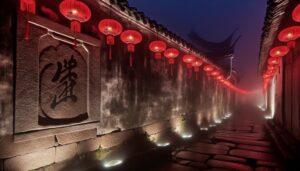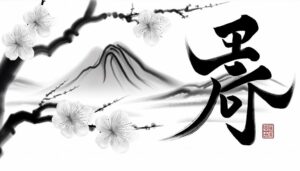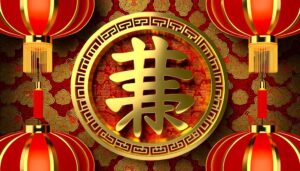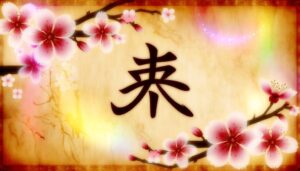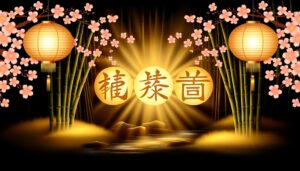10 Chinese Symbols of Wealth and Prosperity You Should Know
In Chinese culture, wealth and prosperity are symbolized through various powerful elements. Dragons epitomize power and auspiciousness, often symbolizing imperial authority and fortune.
Coins, especially those tied with red string, represent financial success and continuity of prosperity. Lucky Bamboo is revered for its ability to attract positive energy and wealth, while fish, particularly koi, symbolize abundance and perseverance.
Colors like red and gold and auspicious numbers such as eight and nine also play an essential role in signifying prosperity. Each symbol carries deep cultural context and historical significance, revealing more layers of meaning and tradition.
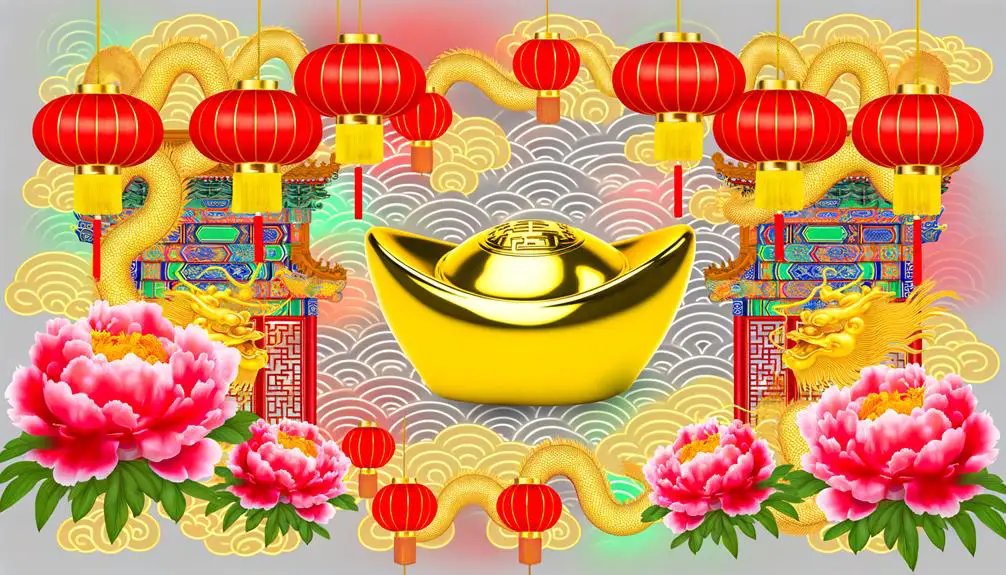
Key Takeaways
- Chinese dragons symbolize power, strength, and prosperity.
- Coins represent wealth and are used in Feng Shui to attract financial success.
- Lucky Bamboo enhances prosperity and balance in Feng Shui.
- Fish, especially koi, symbolize abundance and affluence.
- The colors red and gold signify luck and wealth.
The Power of Dragons
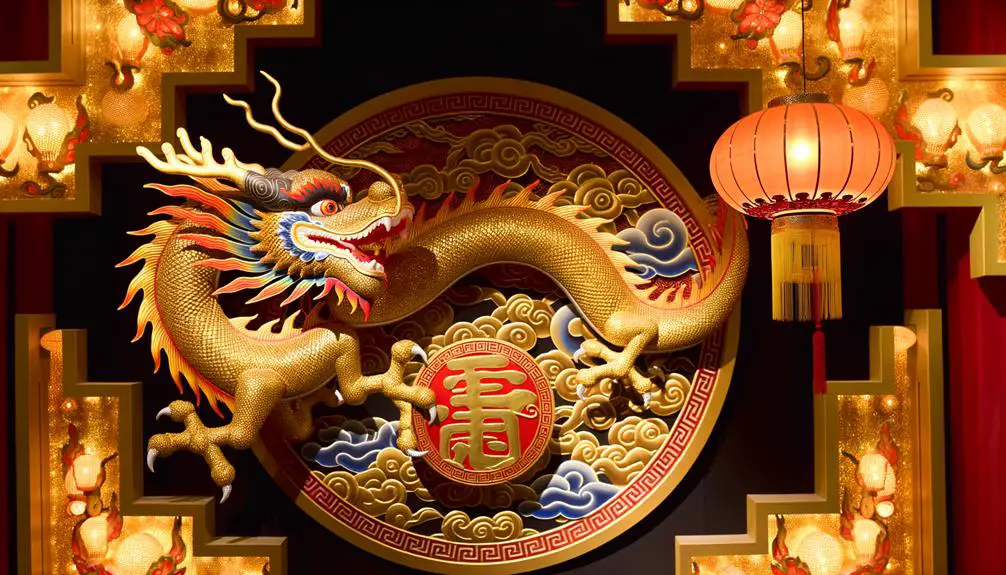
Central to the Chinese cultural and spiritual landscape, dragons are revered not only as mythical creatures but also as potent symbols of power, strength, and prosperity. Rooted in ancient Chinese mythology, dragons embody the fundamental forces of nature, capable of controlling weather, rain, and harvests.
Unlike their Western counterparts, Chinese dragons are typically benevolent and associated with auspiciousness. They symbolize imperial authority, often depicted with emperors, and are invoked for protection and fortune. The dragon's image in art, architecture, and festivals underscores its role as an emblem of importance and success.
This reverence is deeply embedded in Chinese society, where the dragon continues to inspire and influence contemporary cultural practices and beliefs.
Significance of Coins
In addition to the dragon's esteemed place in Chinese culture, coins hold a significant role as symbols of wealth, prosperity, and good fortune, deeply ingrained in the traditions and practices of Chinese society. Historically, Chinese coins, often characterized by a square hole in the center, represent a harmonious balance between heaven (circle) and earth (square).
These coins are frequently employed in Feng Shui practices to attract financial success and safeguard assets. Tied together with red string, they are believed to amplify their auspicious properties. Additionally, ancient coins are also used in various rituals and ceremonies, symbolizing the flow of wealth and continuity of prosperity.
Their significance extends beyond monetary value, embedding themselves as cultural artifacts with profound symbolic resonance.
Lucky Bamboo

Renowned for its symbolism of resilience and good fortune, Lucky Bamboo (Dracaena sanderiana) is deeply ingrained in Chinese culture and frequently used in Feng Shui to enhance prosperity and balance.
This plant, often arranged in intricate designs, is believed to attract positive energy and wealth, making it a popular gift during auspicious occasions.
The number of stalks holds significant significance: three stalks signify happiness, wealth, and longevity, while five stalks represent the five elements of Feng Shui—wood, water, earth, fire, and metal.
Its hardy nature and minimal maintenance requirements further enhance its appeal as a symbol of enduring prosperity.
The Role of Fish
How does the presence of fish in Chinese culture embody the principles of wealth and prosperity?
In Chinese tradition, fish symbolize abundance and affluence, primarily due to the phonetic similarity between the word for fish ('鱼' yú) and the word for surplus ('余' yú). This linguistic connection underscores the belief that fish bring continuous prosperity.
Additionally, fish are often depicted in Chinese New Year decorations and art, representing an overflow of wealth and fortune. The koi fish, in particular, is revered for its association with perseverance and success, making it an auspicious symbol in business and personal endeavors.
The visual representation of fish swimming freely also conveys harmony and prosperity, further emphasizing their role as harbingers of good fortune.
Auspicious Colors and Numbers
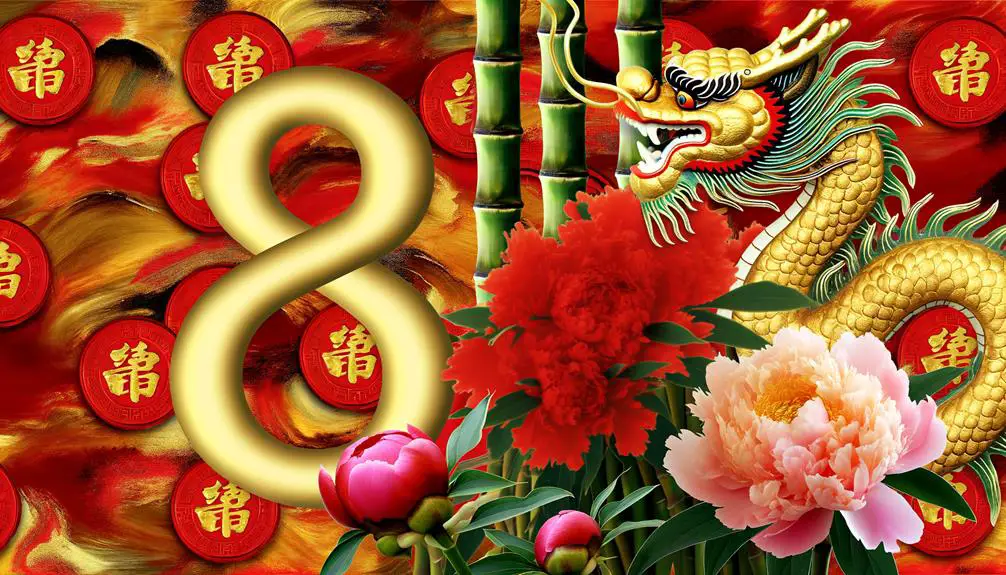
Just as fish embody the principles of abundance and prosperity in Chinese culture, specific colors and numbers are equally imbued with auspicious significance that directs fortune and success.
Red, symbolizing luck and vitality, is prominently featured in celebrations and daily life.
Gold represents wealth and grandeur, often seen in decor and attire during significant events.
The number eight (八, bā) is particularly favored due to its phonetic resemblance to the word for wealth (发, fā).
Similarly, the number nine (九, jiǔ), signifying longevity and eternity, is considered highly auspicious.
Conversely, the number four (四, sì) is avoided due to its similarity in pronunciation to the word for death (死, sǐ).
These cultural elements underscore the profound interplay between symbolism and prosperity in Chinese traditions.
Conclusion
In the grand tapestry of Chinese culture, dragons, coins, bamboo, fish, and auspicious colors and numbers are not merely symbols but the very fabric of fortune and abundance. Each element, meticulously detailed, offers a satirical reminder of humanity's perennial quest for wealth and prosperity.
One must ponder if the true treasure lies in the pursuit of these symbols or in the rich cultural context they represent, revealing an ironic yet profound commentary on the human condition.

